The Science of Nitrogen Absorption: Materials and Methods that Soak Up Nitrogen
Takeaway:
The science of nitrogen absorption offers crucial solutions to address environmental challenges and promote sustainability in various industries. Efficient materials and methods that soak up nitrogen play a vital role in protecting ecosystems, conserving resources, mitigating climate change, and safeguarding human health. By exploring the diverse range of absorbents and absorption techniques, we can implement practical and innovative approaches to manage nitrogen pollution effectively. Embracing these advancements and considering future trends will pave the way for a cleaner, greener, and more sustainable future, ensuring a healthier planet for generations to come.
Introduction
Nitrogen absorption is the process by which nitrogen gas or compounds are taken up and retained by certain materials or substances. This phenomenon has immense significance across various industries and environmental applications. Nitrogen is an essential element for life, playing a crucial role in the growth and development of plants, animals, and microorganisms. However, excessive nitrogen in certain environments can lead to detrimental effects, such as environmental pollution, ecosystem imbalances, and health issues.
In agricultural practices, nitrogen is a vital component of fertilizers used to enhance crop productivity. However, excess application of nitrogen-based fertilizers can lead to nitrogen runoff, which contaminates water bodies, causing algal blooms, eutrophication, and dead zones, severely impacting aquatic life and water quality.
In industrial processes, nitrogen is often used for inerting, blanketing, or purging purposes. While it is essential for safety and operation, its uncontrolled release into the atmosphere can contribute to air pollution and global warming. Therefore, efficient nitrogen absorption materials and methods are essential to mitigate environmental damage.
Nitrogen compounds, such as ammonia and nitrate, also pose challenges in wastewater treatment plants. High levels of nitrogen in wastewater can be harmful to aquatic ecosystems and human health if not adequately removed. Thus, effective materials and methods for nitrogen absorption are crucial to ensure safe and sustainable wastewater treatment.
The importance of finding effective materials and methods for nitrogen absorption stems from the urgent need to address nitrogen-related environmental issues. Traditional methods of nitrogen removal, such as chemical treatments or dilution, may not always be efficient, cost-effective, or environmentally friendly. Thus, exploring innovative and sustainable solutions becomes imperative.
Cryogenic Offshore Tank for Liquid Nitrogen 8,000 Liters
Efficient nitrogen absorption materials and methods offer several advantages:
- Environmental Protection: By efficiently absorbing and removing nitrogen from various sources, these materials and methods can help protect natural ecosystems, improve water quality, and reduce air pollution, contributing to environmental conservation and sustainable development.
- Resource Conservation: Preventing nitrogen loss through absorption helps conserve valuable nitrogen resources, which are crucial for agricultural productivity. It minimizes the need for excessive fertilizer use, reducing production costs for farmers and decreasing the risk of nutrient runoff.
- Climate Change Mitigation: As nitrogen-based compounds are potent greenhouse gases, effective nitrogen absorption can contribute to mitigating climate change by reducing the release of nitrogen compounds into the atmosphere.
- Human Health and Safety: Reducing nitrogen pollution in water bodies and air enhances human health and safety, as high nitrogen levels can lead to adverse health effects and compromise drinking water quality.
The purpose of this content is to delve into the science of nitrogen absorption, focusing on materials and methods that effectively and efficiently soak up nitrogen from various sources. By exploring the latest advancements, research, and applications in this field, we aim to promote a comprehensive understanding of nitrogen absorption and its potential solutions. This content will cover an extensive range of topics, including different types of materials used for nitrogen absorption, such as natural, synthetic, and hybrid absorbents. Additionally, it will explore various absorption methods, such as physical, chemical, and biological processes, and their applications in different industries.
By the end of this content, readers will gain a comprehensive understanding of the science behind nitrogen absorption and its critical role in addressing environmental challenges, promoting sustainable practices, and safeguarding the planet for future generations.
Liquified Nitrogen (storage for Liquid Nitrogen)
Understanding Nitrogen Absorption
Nitrogen absorption is the process of capturing and retaining nitrogen molecules or compounds by certain materials or substances. This phenomenon plays a vital role in various applications across industries and environmental management. Understanding the Use of Nitrogen in Nigeria, is essential to develop effective solutions for nitrogen-related issues.
- Agriculture: In agriculture, nitrogen absorption is critical for plant growth and development. Plants mainly absorb nitrogen in the form of ammonium (NH4+) and nitrate (NO3-). These nitrogen compounds are essential components of fertilizers used to enhance crop productivity. When applied to the soil, plants take up the nitrogen for their metabolic processes, leading to improved yields and increased food production. However, excessive use of nitrogen-based fertilizers can lead to nutrient runoff, leaching, and environmental pollution. Therefore, finding materials and methods that can efficiently absorb excess nitrogen from the soil is crucial for sustainable agriculture.
- Wastewater Treatment: In wastewater treatment, nitrogen absorption plays a central role in the removal of nitrogen compounds from sewage and industrial effluents. The two main forms of nitrogen in wastewater are ammonia (NH3) and nitrate (NO3-). High levels of nitrogen in water bodies can lead to eutrophication, harmful algal blooms, and oxygen depletion, causing significant damage to aquatic ecosystems. By employing effective absorption materials and methods, wastewater treatment plants can remove nitrogen compounds and reduce their environmental impact.
- Gas Separation and Purification: In industrial processes, nitrogen gas is often used for various applications, such as inerting and blanketing to prevent explosions and oxidation. However, there is a need to separate nitrogen from other gases in certain industries, such as air separation plants. Nitrogen absorption materials can selectively absorb nitrogen from gas mixtures, providing a cost-effective and energy-efficient way to purify gases for industrial use.
- Environmental Pollution Control: Nitrogen compounds, especially nitrogen oxides (NOx), are major contributors to air pollution. They play a significant role in the formation of smog and acid rain, impacting air quality and human health. Materials capable of absorbing nitrogen oxides from exhaust gases and industrial emissions are essential in mitigating air pollution and promoting cleaner environments.
Different Forms of Nitrogen and Their Behavior During Absorption
Nitrogen exists in various forms, each with unique behavior during absorption. The main forms of nitrogen encountered in absorption processes include:
- Ammonia (NH3): Ammonia is a colorless gas with a pungent odor, commonly found in industrial emissions and wastewater. It is highly soluble in water, and during absorption, ammonia readily dissolves into water-based absorbents. Absorption of ammonia is often driven by physical adsorption or chemical reactions with the absorbent material.
- Nitrate (NO3-): Nitrate is a stable and highly water-soluble nitrogen compound commonly present in agricultural runoff and wastewater. Nitrate absorption is predominantly achieved through ion exchange or chemical reactions with suitable absorbent materials.
- Nitrogen Gas (N2): Nitrogen gas is the most abundant form of nitrogen in the atmosphere, constituting about 78% of the air we breathe. Separating nitrogen gas from other gases is crucial in industries like gas production and storage. This is achieved through processes like pressure swing adsorption (PSA) or membrane separation, where specialized absorbent materials selectively adsorb nitrogen.
- Nitrogen Oxides (NOx): Nitrogen oxides, such as nitric oxide (NO) and nitrogen dioxide (NO2), are produced during combustion processes and industrial activities. These gases contribute to smog formation and acid rain. Selective catalytic reduction (SCR) and selective non-catalytic reduction (SNCR) are common methods to absorb and reduce nitrogen oxides using catalysts or absorbent materials.
6L Cryogenic container for Liquid Nitrogen dewar
Challenges Associated with Nitrogen Management and the Need for Efficient Solutions
Nitrogen management poses several challenges, primarily driven by the extensive use of nitrogen-based fertilizers and industrial processes. Some of the key challenges include:
- Environmental Pollution: Excessive nitrogen runoff from agricultural fields contributes to water pollution, leading to eutrophication, algal blooms, and dead zones in aquatic ecosystems. It also affects groundwater quality and can lead to the contamination of drinking water sources. Addressing this issue requires efficient nitrogen absorption methods to prevent nutrient runoff and safeguard water quality.
- Wastewater Treatment: Traditional wastewater treatment processes may struggle to efficiently remove nitrogen compounds, especially ammonia and nitrate. The presence of high nitrogen levels in treated effluents poses a threat to receiving water bodies and requires advanced absorption techniques for effective removal.
- Energy Intensive Processes: Some nitrogen separation and purification processes, such as cryogenic distillation for nitrogen gas production, can be energy-intensive and costly. Developing absorbents with high selectivity and capacity for nitrogen separation can lead to more energy-efficient and sustainable solutions.
- Selective Nitrogen Oxide Reduction: Reducing nitrogen oxides from industrial emissions while ensuring the selectivity of the process remains a significant challenge. Catalysts and absorbents must be carefully designed to achieve effective NOx reduction without undesirable byproducts.
Hellog Nitrogen Delivery Pressure Regulator
Types of Materials for Nitrogen Absorption
A. Natural Materials
Introduction to Natural Absorbents (e.g., Zeolites, Activated Carbon):
Natural absorbents are materials of geological origin or derived from living organisms that possess the ability to selectively absorb and retain nitrogen compounds. Two commonly used natural absorbents for nitrogen absorption are zeolites and activated carbon.
a. Zeolites: Zeolites are crystalline aluminosilicates with a unique porous structure. They have a high affinity for cations, including ammonium (NH4+). The porous nature of zeolites allows them to selectively adsorb and exchange cations, making them effective in removing ammonia from wastewater and soil.
b. Activated Carbon: Activated carbon, derived from various carbonaceous sources, exhibits a highly porous structure with a large surface area. It possesses strong adsorption capabilities for various substances, including nitrogen compounds. Activated carbon is widely used in gas separation, water treatment, and air purification applications.
Characteristics and Advantages of Using Natural Materials:
Natural materials offer several advantages for nitrogen absorption:
a. Environmental Friendliness: Natural absorbents are generally environmentally friendly and sustainable. They occur naturally or can be derived from renewable sources, reducing their ecological impact.
b. Selectivity: Natural materials often exhibit high selectivity for specific nitrogen compounds. This allows for targeted removal of pollutants while minimizing interference with other beneficial substances.
c. Low Cost: In many cases, natural absorbents can be sourced locally or even produced on-site, making them cost-effective compared to some synthetic alternatives.
d. Non-toxic: Natural absorbents are generally non-toxic, making them safe for use in various applications, including wastewater treatment and agriculture.
Case Studies of Successful Applications:
i. Zeolites in Agricultural Soil Amendment: Several studies have shown the successful use of zeolites as soil amendments to improve nitrogen retention and reduce nutrient leaching in agricultural fields. Zeolites effectively adsorb ammonium ions, preventing their loss through leaching and runoff, thereby promoting more efficient nitrogen use by plants.
ii. Activated Carbon in Air Purification: Activated carbon is widely used in air purification systems to absorb nitrogen oxides, volatile organic compounds (VOCs), and other harmful pollutants from the atmosphere. It plays a vital role in reducing air pollution in urban areas and industrial settings.
Nitrogen Gas Regulator
B. Synthetic Materials
Overview of Synthetic Absorbents (e.g., Polymers, Resins):
Synthetic absorbents are man-made materials designed with specific structures and chemical properties to exhibit high nitrogen absorption capacity and selectivity. Common synthetic absorbents for nitrogen include polymers and resins.
a. Polymers: Polymers are large molecules composed of repeating subunits. Synthetic polymers can be tailored to have specific functional groups that attract and retain nitrogen compounds effectively.
b. Resins: Resins are synthetic materials with high adsorption capacities for various substances. Ion exchange resins, in particular, can efficiently remove nitrogen compounds from water and other liquid streams.
Key Properties that Make Synthetic Materials Effective:
a. Tailored Selectivity: Synthetic materials can be engineered to have a high affinity for specific nitrogen compounds, allowing for targeted and efficient removal.
b. High Adsorption Capacity: Synthetic absorbents often exhibit high surface area and porosity, resulting in a large adsorption capacity for nitrogen compounds.
c. Regenerability: Some synthetic materials can be easily regenerated and reused, reducing operational costs and waste generation.
Examples of Industries Where Synthetic Materials Are Widely Used:
i. Wastewater Treatment: Synthetic absorbents, such as ion exchange resins, are extensively used in wastewater treatment plants to remove nitrogen compounds, especially ammonia and nitrate, from effluents before discharge.
ii. Gas Separation: In industries like nitrogen production, synthetic absorbents are utilized in pressure swing adsorption (PSA) processes to separate nitrogen from other gases in air to obtain high-purity nitrogen gas.
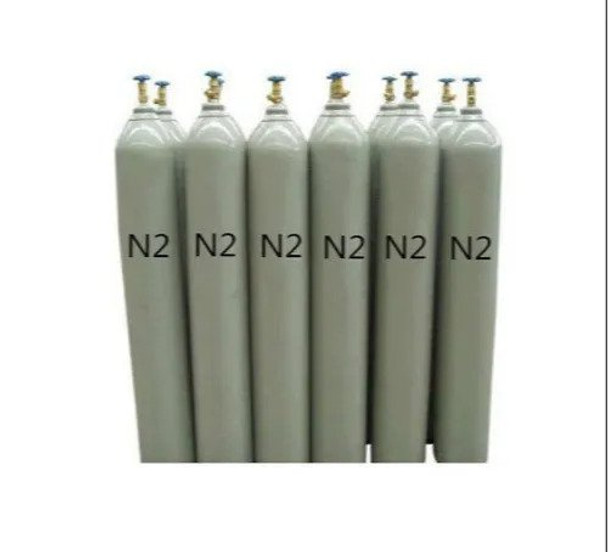
Nitrogen Gas High purity compressed, 50 liters (returnable) Cylinders
C. Hybrid Materials
Explanation of Hybrid Absorbents Combining Natural and Synthetic Components:
Hybrid absorbents are a class of materials that combine natural and synthetic components to leverage the advantages of both. By blending these materials, researchers can create hybrid absorbents with enhanced adsorption properties and improved performance.
Benefits and Drawbacks of Hybrid Materials:
a. Enhanced Performance: Hybrid absorbents often exhibit improved selectivity, higher adsorption capacity, and increased stability compared to their individual components.
b. Flexibility: Hybrid materials can be designed with specific functionalities, tailoring them to different applications and optimizing their nitrogen absorption performance.
c. Cost and Complexity: Depending on the components used, the synthesis of hybrid materials can be more complex and potentially costlier than using natural or synthetic materials separately.
Methods for Nitrogen Absorption
A. Physical Absorption
Physical adsorption, also known as physisorption, is a process by which nitrogen molecules or compounds adhere to the surface of an absorbent material due to weak van der Waals forces or London dispersion forces. This phenomenon occurs when there is a relatively weak attraction between the nitrogen species and the absorbent surface.
Factors Influencing Physical Adsorption Efficiency:
a. Surface Area: The higher the surface area of the absorbent material, the greater the potential for physical adsorption due to increased available sites for nitrogen molecules to adhere.
b. Pore Size and Porosity: Materials with well-defined pores and an appropriate pore size distribution can enhance physical adsorption by providing confinement for nitrogen molecules.
c. Temperature and Pressure: Physical adsorption efficiency can be influenced by temperature and pressure. At low temperatures and high pressures, adsorption tends to be more favorable.
Applications and Limitations of Physical Adsorption Techniques:
Applications:
- Activated carbon is commonly used for physically adsorbing nitrogen compounds from air and water streams.
- Silica gel, zeolites, and other porous materials are used for nitrogen removal in various applications, including gas separation and drying processes.
Limitations:
- Physical adsorption is typically reversible, making regeneration and reuse of the absorbent material challenging.
- The adsorption capacity for nitrogen compounds can be limited compared to other methods.
- High levels of competing gases or compounds may hinder the efficiency of physical adsorption.
Nitrogen Valve CODE NO. 103
B. Chemical Absorption
Chemical adsorption, or chemisorption, involves the formation of chemical bonds between the absorbent material and the nitrogen compounds. This process is usually stronger than physical adsorption and involves electron transfer between the adsorbate and the absorbent's surface.
Types of Chemical Absorbents and Their Working Principles:
a. Ion Exchange Resins: These resins contain functional groups that can exchange ions with nitrogen compounds. Ammonium ions, for example, can be exchanged with other cations present in the resin, leading to the removal of ammonium from water.
b. Absorbents with Reactive Sites: Some materials have specific reactive sites, such as hydroxyl groups, that chemically react with nitrogen compounds to form covalent bonds.
c. Chemical Precipitation: Chemical absorbents can facilitate the precipitation of nitrogen compounds into insoluble forms, which can then be separated from the solution.
Case Studies Showcasing Successful Chemical Absorption Methods:
i. Ammonia Removal in Wastewater: Chemical precipitation using metal salts, such as alum (aluminum sulfate) or lime (calcium hydroxide), is employed to remove ammonia from wastewater by forming insoluble precipitates.
ii. Acid Gas Removal: Chemical absorption is widely used to remove acid gases, such as sulfur dioxide (SO2) and hydrogen sulfide (H2S), from industrial gas streams. Absorbents like alkaline solutions react with acid gases to form stable salts.
C. Biological Absorption
Biological nitrogen removal processes leverage the metabolic activities of microorganisms to convert nitrogen compounds into harmless gases, such as nitrogen gas or nitrogen oxides, which can then be released into the atmosphere.
Role of Microorganisms in Nitrogen Absorption:
a. Nitrification: Certain bacteria, such as Nitrosomonas and Nitrobacter, play a role in nitrification, the conversion of ammonia (NH3) to nitrate (NO3-) through two sequential oxidation steps.
b. Denitrification: Denitrifying bacteria, like Pseudomonas and Paracoccus species, facilitate denitrification, where nitrate (NO3-) is converted into nitrogen gas (N2) or nitrous oxide (N2O) under anaerobic conditions.
Bioremediation Techniques and Their Applications:
i. Constructed Wetlands: Constructed wetlands utilize aquatic plants and microorganisms to naturally treat wastewater. Nitrogen compounds are absorbed by plants and transformed through microbial processes, reducing their concentration in the water.
ii. Activated Sludge Process: In wastewater treatment plants, the activated sludge process employs a mixture of microorganisms to remove nitrogen compounds. Nitrification and denitrification occur within the activated sludge, effectively reducing nitrogen content.
iii. Anaerobic Digestion: Anaerobic digestion of organic matter generates biogas and reduces nitrogen content. Under anaerobic conditions, some nitrogen compounds are converted to nitrogen gas by denitrifying bacteria.
Nitrogen Pressure Test Gauge
Factors Affecting Nitrogen Absorption
Environmental Factor
Temperature and Its Impact on Absorption Efficiency:
Temperature plays a significant role in nitrogen absorption processes. In general, higher temperatures can enhance the rate of adsorption due to increased kinetic energy of the molecules involved. However, the relationship between temperature and absorption efficiency can be complex and depends on the specific material and adsorption mechanism.
pH Levels and Their Influence on Different Materials:
pH levels influence the ionization states of nitrogen compounds, affecting their solubility and reactivity. Different materials have varying affinity for ionized and non-ionized forms of nitrogen compounds. For instance, some materials may be more effective at higher pH for adsorbing ammonium ions, while others might prefer lower pH for nitrate removal.
Presence of Other Contaminants and Their Interactions with Nitrogen:
The presence of other contaminants can significantly impact the efficiency of nitrogen absorption. Competitive adsorption occurs when multiple substances compete for adsorption sites on the material's surface. Certain contaminants may hinder nitrogen adsorption by blocking active sites or interfering with adsorption mechanisms. Understanding these interactions is crucial for optimizing nitrogen removal processes.
B. Material Characteristics
Porosity and Surface Area of Absorbents:
The porosity and surface area of absorbent materials play a vital role in determining their nitrogen adsorption capacity. Materials with larger surface areas and well-defined pore structures can provide more sites for nitrogen compounds to be adsorbed. Highly porous materials, such as activated carbon and zeolites, are preferred for nitrogen removal due to their extensive surface area.
Chemical Composition Affecting Selectivity and Capacity:
The chemical composition of absorbent materials determines their affinity for specific nitrogen compounds. Different functional groups and chemical moieties on the material's surface interact differently with various nitrogen species. Tailoring the chemical composition of materials can enhance their selectivity for target nitrogen compounds and improve overall adsorption capacity.
Durability and Reusability of Materials:
The durability and reusability of absorbent materials are crucial economic and environmental considerations. Materials that can withstand multiple cycles of adsorption and desorption without significant degradation are preferred. Regenerable materials reduce the need for frequent replacement, thereby reducing operational costs and waste generation.
Bulk Storage Tank Ambient Air Vaporizer [ Oxygen - Nitrogen - Argon ]
Applications of Nitrogen Absorption
A. Agriculture and Soil Remediation
Role of Nitrogen Absorption in Sustainable Agriculture:
Nitrogen absorption materials play a pivotal role in sustainable agriculture by reducing the negative environmental impacts of excessive fertilizer use. These materials can be incorporated into fertilizers or soil amendments to enhance nitrogen retention and prevent leaching into groundwater. By improving nitrogen use efficiency, agricultural productivity can be increased while minimizing nutrient runoff and water pollution.
Using Materials to Reduce Nitrogen Runoff and Pollution:
Nitrogen absorption materials, such as zeolites and biochar, can be added to soils to mitigate nitrogen runoff and pollution. These materials adsorb excess nitrogen compounds, reducing their movement into water bodies. This approach helps protect aquatic ecosystems from eutrophication and preserves water quality.
B. Wastewater Treatment
Importance of Nitrogen Removal in Wastewater:
Nitrogen removal is a critical step in wastewater treatment to prevent environmental contamination and comply with regulatory standards. High levels of nitrogen compounds, especially ammonia and nitrate, can have detrimental effects on aquatic ecosystems, leading to oxygen depletion, algal blooms, and fish kills.
Effective Methods for Treating Nitrogen-Rich Wastewater:
Nitrogen removal in wastewater treatment involves various processes such as nitrification, denitrification, and anammox (anaerobic ammonium oxidation). Different absorbents, like activated carbon, ion exchange resins, and biofilm carriers, can be integrated into these processes to enhance nitrogen removal efficiency and meet discharge limits.
C. Gas Separation and Purification
Nitrogen Separation Technologies in Industrial Processes:
Nitrogen separation is crucial in industries where high-purity nitrogen gas is required. Gas separation techniques like pressure swing adsorption (PSA) and membrane separation exploit the differences in gas solubility and diffusion rates to selectively separate nitrogen from other gases in air or gas mixtures.
Materials Used for Nitrogen Purification in Various Industries:
Materials used for nitrogen purification include zeolites, activated carbon, and specialized polymers. These materials are designed to adsorb or selectively permeate nitrogen, ensuring the resulting gas stream meets the required purity levels. Applications range from food packaging and electronics manufacturing to oil and gas refining.
Conclusion
The journey through the science of nitrogen absorption brings us to a pivotal juncture where innovation meets responsibility. With each advancement and solution, we draw closer to a world where the excesses of nitrogen find equilibrium through the prowess of absorption materials and methods. This equilibrium, in turn, reverberates in the purity of our water, the vitality of our soil, and the clarity of our air.
In the pursuit of sustainable progress, the science of nitrogen absorption stands as a testament to human ingenuity and its capacity to align with nature's rhythms. The journey continues, as researchers, industries, and societies join hands to refine these techniques, explore new frontiers, and weave a tapestry of solutions that ensure a balanced coexistence with our environment. Through these materials and methods that soak up nitrogen, we forge a path toward a healthier, greener future for generations to come.
From the natural absorbents like zeolites and activated carbon, which harness the power of Earth's resources, to the synthetic materials such as polymers and resins, ingeniously designed to selectively capture nitrogen compounds, each avenue presents an avenue to address environmental issues that threaten our ecosystems and well-being.
Moreover, the convergence of natural and synthetic elements into hybrid absorbents exemplifies the innovative spirit of modern science, offering novel solutions that harmonize the strengths of both domains. The evolution of materials reflects an ongoing commitment to optimizing efficiency, selectivity, and durability – vital traits for successful nitrogen absorption processes.
Delving deeper, the methods employed for nitrogen absorption, whether through physical, chemical, or biological avenues, elucidate the intricate dance between molecules, surfaces, and living organisms. Environmental factors, such as temperature, pH, and the presence of contaminants, intricately influence the efficacy of absorption processes, underlining the need for holistic understanding and tailored approaches.
As we navigate the applications, it's evident that the impact of nitrogen absorption is far-reaching. In agriculture and soil remediation, these methods hold the promise of balancing crop productivity with environmental conservation. In wastewater treatment, they stand as bulwarks against water pollution, ensuring the vitality of aquatic ecosystems. In the realm of gas separation and purification, nitrogen absorption drives industrial processes toward greater efficiency and eco-friendliness.


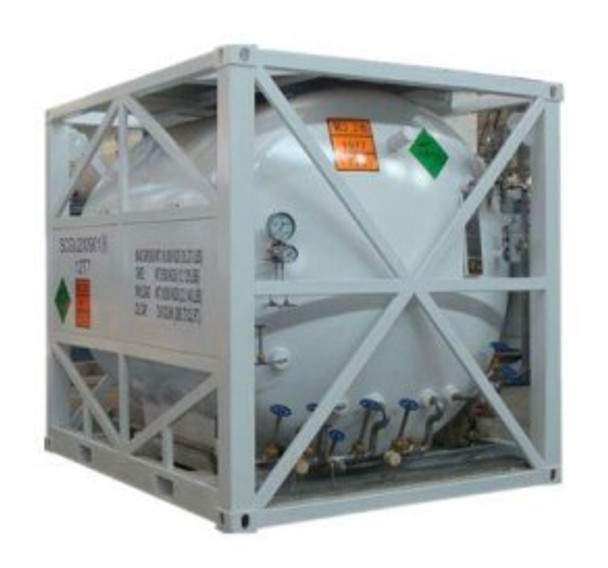
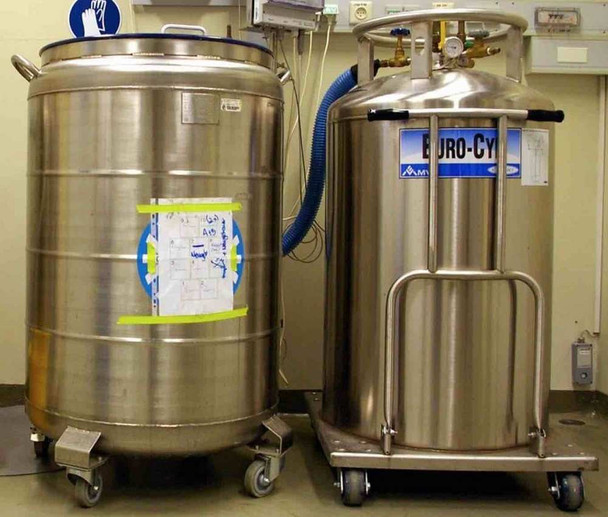
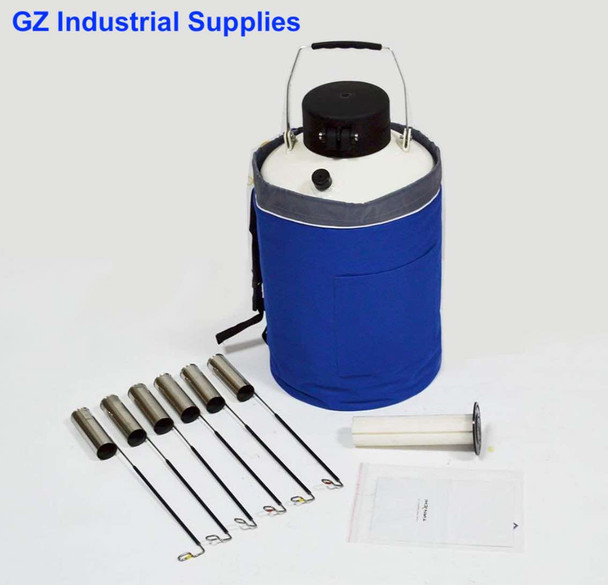
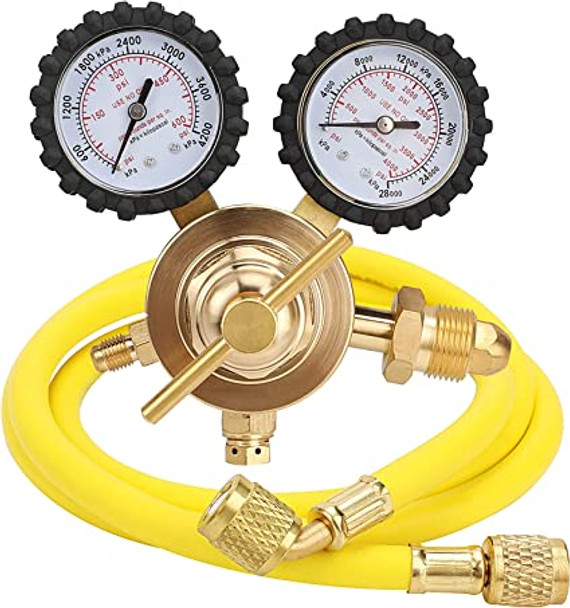
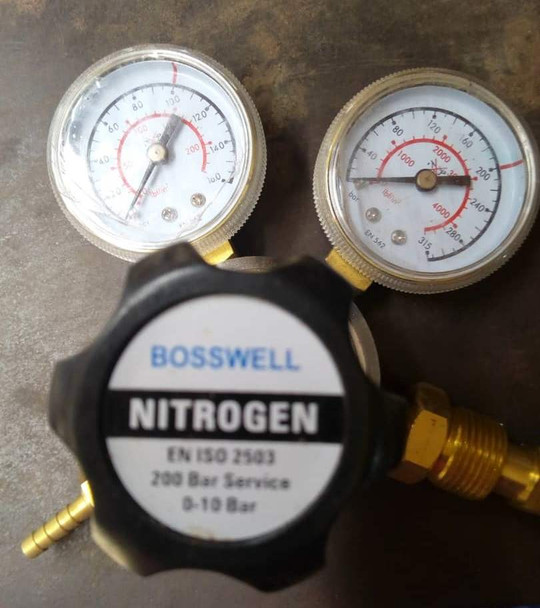
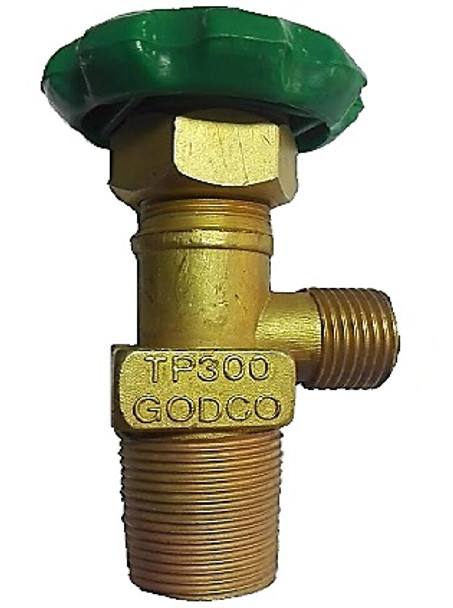
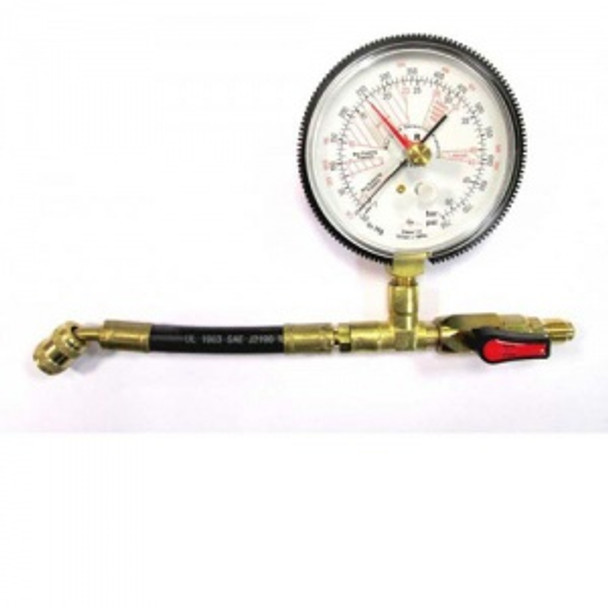
![Bulk Storage Tank Ambient Air Vaporizer [ Oxygen - Nitrogen - Argon ] Bulk Storage Tank Ambient Air Vaporizer [ Oxygen - Nitrogen - Argon ]](/product_images/uploaded_images/bulk-storage-tank-ambient-air-vaporizer-oxygen-nitrogen-argon-.jpg)





